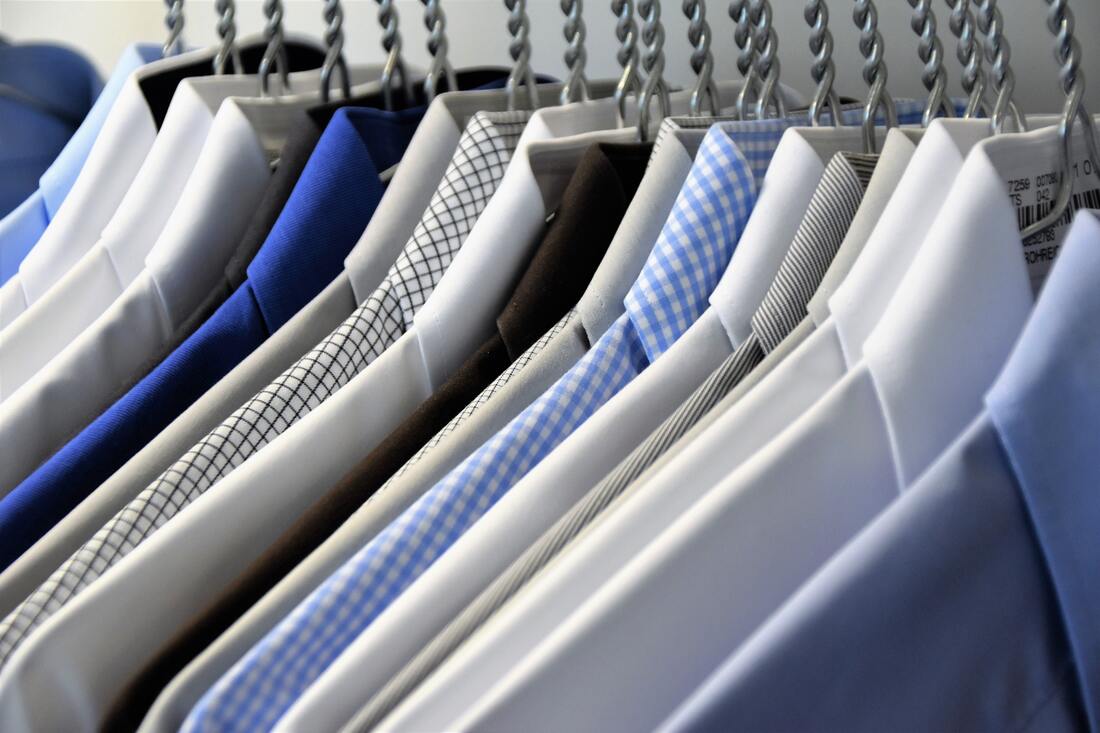|
By: Maya Ruby Everyone knows the saying “dress for success”; it’s a well-known phrase that encourages people to dress up and look the part at work, interviews, and even school. However, the question is, does looking the part actually increase chances of success and productivity in the workplace? Studies find that what you wear in an interview matters, from colour choices to clothing pieces, but it does not necessarily increase productivity. You’ve got to choose your clothes based on your own situation and context, keeping in mind the image you want to portray to others.
Clothing influences the behavior of others around you, as it can communicate a great deal to observers, intentionally or not. Although it is unfair, it is well documented that people make judgements about you based on what you’re wearing. At an interview or job that involves face-to-face interaction with clients, you may wish to wear clothing that studies indicate engender appreciation and respect. For example, individuals wearing blue are rated more highly, though this standard applies to men more than women. This study also cautions people against wearing red, as it has been found to diminish the authority of those wearing it. These clothing suggestions are also most strongly impactful in the business world, where a ‘uniform’ of layered, blue suits has been created over the decades. Additionally, layering (jackets, blazers, etc.) have been found to influence the ranking of the study participants. Those wearing more layers were perceived as responsible and competent, therefore standing above their peers. However, these formal guidelines for dress are only applicable in industries based on social interaction and interviews. In the general work force, most people work behind the scenes. Standard desk jobs are becoming more and more common due to the increase of technology and role in the work force. These workers, whose job doesn’t rely on the impressions they leave on others, have been found to be more productive in a relaxed environment. It has been found that 61% of employees are more productive in a relaxed dress code, and most people who work in an environment with a dress code find that it’s useless. Dress codes increase financial pressure as workplace attire is very expensive, whereas the clothing you already own doesn’t cost you anything. Additionally, comfort and confidence increase when people wear what they want, which increases productivity. Morale is higher when employees feel that they can express themselves creatively through their clothing. Ultimately, people are happier when they have more control over their lives, and happy employees create an increase in the volume of work being completed, as well as an increase in workplace collaboration. It is important to consider every factor when deciding what to wear to work, interviews, or school. When you feel better, you work better; however, there are many cases in which a strict dress code does improve focus. For example, in medical environments, the quality of work improves when doctors are wearing lab coats. Alternatively, in other environments, ignoring the dress code can give the impression that a person is better at their job, though it’s recommended that this practice is exercised with caution. People admire confidence and self-security, and making the conscious decision to dress differently can set you apart from your coworkers. Ultimately, you must choose your attire based on your own workplace experience, but it should be an informed decision because clothing, fancy or casual, impacts your performance and the impression you leave on others. References: Adam, Hajo, and Adam D. Galinsky. “Enclothed Cognition.” Journal of Experimental Social Psychology, vol. 48, no. 4, 2012, pp. 918–925., doi:10.1016/j.jesp.2012.02.008. Kalish, Alyse. “A Scientific Reason Why Dressing for Success Works.” The Muse, 19 June 2020, www.themuse.com/advice/the-scientific-reason-why-dressing-for-success-works-with-a-twist-of-course. Reynolds, Lisa. “Casual Dress and Productivity: What's the Bottom Line?” ISCG, 12 June 2017, www.iscginc.com/blog/casual-dress-and-productivity-whats-the-bottom-line/2017/6/12. Rollings, Michaela. “Does What We Wear To Work Affect Our Productivity?” Hive, 2 Oct. 2020, www.hive.com/blog/office-dress-productivity/. Romm, Cari. “To Seem Better at Your Job, Ignore the Office Dress Code.” The Cut, 25 Aug. 2016, www.thecut.com/2016/08/ignore-the-office-dress-code-to-seem-better-at-your-job.html. Scherbaum, Carol J., and Donald H. Shepherd. “Dressing for Success: Effects of Color and Layering on Perceptions of Women in Business.” Sex Roles, vol. 16, no. 7-8, 1987, pp. 391–399., doi:10.1007/bf00289550. Wilson, Rebecca. “61% Of Employees More Productive When Dress Code Is Relaxed, Study Finds.” Recruitment International, 11 Jan. 2017, www.recruitment-international.co.uk/blog/2017/01/61-percent-of-employees-more-productive-when-dress-code-is-relaxed-study-finds.
0 Comments
Your comment will be posted after it is approved.
Leave a Reply. |
Categories |


 RSS Feed
RSS Feed